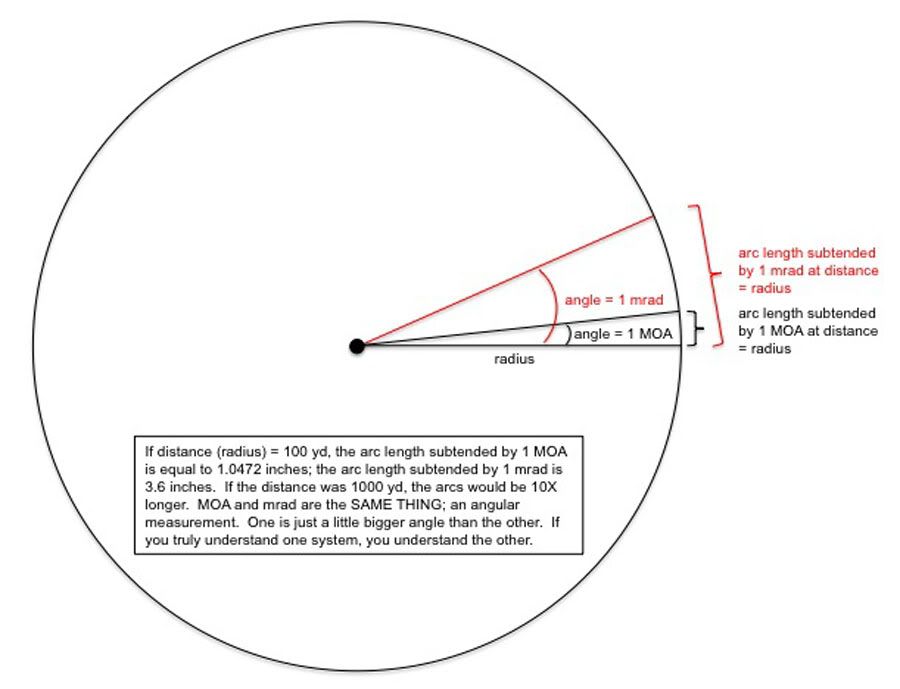Gstaylorg,
That is what I was looking for! Thanks to everyone.
I was looking for this info because I run local rifle matches, and was trying to think up stages where the MOA was the same for various targets at various distances. I realize that one MOA is not truly one inch, but I have read it called a "shooter's MOA", or "SMOA", and it is represented as one inch per hundred yards. I wanted to be able to calculate this correctly, so I needed to know whether I should one shape VS another to represent one MOA.
As I currently understand it, I would use the standard formula for figuring the square inches for a given circle, lets say 6 inch round at 300 yards would equal roughly 2 MOA. Then, if I placed a 12 inch circle at 600 yards, this would also represent roughly 2 MOA (or SMOA if you prefer).
I wanted to find out whether the correct formula for figuring out MOA would be based on a circle, (Pi, R squared) or square (height X width). I now know it is a circle. I suspected as much because the whole MOA system is based off portions of angles of a circle.
I run local rifle matches and wanted to run some stages where targets and point value is based on the MOA each target represents at each distance. A target that is 2 MOA would be worth twice as many points as a 4 MOA target at the same distance. I realize I could have simply used square inches, but I have had lots of inquiries about how many MOA our "normal" targets represent. So I wanted to be able to properly figure out ROUGHLY how many MOA a square or rectangular target would represent. I realize that unusual target shapes can't actually be converted from square inches to MOA, but it will help me approximate what the various shapes represent if I figure square inches for round targets, and then use the same square inches for oddly shaped targets. (Realizing of course that MOA is round to account for both elevation and windage in accuracy)
Thanks to everyone. Now back to your regularly scheduled programming.

